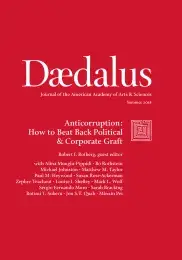Reforming Reform: Revising the Anticorruption Playbook
Three decades of anticorruption activism have yielded only indifferent results. It is time to step back and rethink some basic issues. Among them are what the opposite of corruption might look like; our excessive faith in transparency; the distinction between “grand” and “petty” corruption; our reliance on the concept of “political will”; and what the best ways are of measuring corruption and mobilizing civil society. “Best practices” are elusive and do not always transfer well from one setting to the next. However, “better practices” are possible if we understand how corruption arises as a political and social issue, and how well-governed societies got that way. We often turn history upside down, overemphasizing reform from above while neglecting contention from below; and get history backward by mistaking outcomes of contention for the causes of better government. “Deep democratization’ – enabling citizens to demand justice and better government – tailored to contrasting situations and syndromes may yield better long-term results.
Two generations of activism and research in support of corruption control have produced indifferent results at best. What kind of thinking–and rethinking–might lead to better outcomes? This essay offers critical commentary about the contemporary anticorruption movement, made from the perspective of a longtime friend and active participant. (When I write that “we” have struggled with this or failed to realize that, I include myself.) The arguments in this essay fall into two categories: common reform themes that need rethinking or, in some cases, replacement; and a discussion of what history might tell us about the drivers of both corruption and sustained opposition to it. My ideas in no way supplant reforms underway today, but rather are intended to build stronger foundations for them. The result is not a list of “best practices,” but ideas about better practices, tailored to address a range of challenges.
It would be wrong to suggest that the reform movement has failed. Corruption, for many years . . .
